Wheat Diseases – What To Be On The Lookout For This Spring
DR. HEATHER YOUNG KELLY
JACKSON, TENN.
Once we start to thaw out from winter, wheat as well as diseases will start to grow and develop. In some areas stripe rust has already shown up, which may indicate an increased disease risk in wheat this year.
Wheat stripe rust, like other rusts, has to overwinter in green, living tissue. It can survive as a dormant infection from the fall that initiates or continues sporulation when conditions become favorable. While the fungus that causes stripe rust, Puccinia striiformis, can remain viable at temperatures as low as 23º F, it is thought that repeated freeze-thaw cycles will reduce the population of the fungus due to direct damage to the fungus as well as to the wheat leaves it must survive on. The stripe rust reported in Louisiana and Arkansas in late January and early February indicates a higher probability that stripe rust will show up earlier in Tennessee this year.
Wheat fields in Tennessee should be monitored for stripe rust as well as other diseases as we move into spring. Stripe rust is best identified by tiny, yellow to bright orange pustules that form distinct stripes on the leaves (Image 1).
Although, these distinct stripes are not formed on seedling leaves (Image 2), rather stripe rust will appear in more of a clump. Dr. Tom Allen at Mississippi State University posted a good article, ‘Scouting and Managing Wheat Stripe Rust Infection at Tillering Stages’ which contains more information on early stripe rust infection and contained Image 3 (below), showing what early infection of stripe rust can look like. See the “Wheat Disease Identification” and “Common Fungal Wheat Diseases” at UTcrops.com for more images and information on other wheat diseases.
As Dr. Allen discusses, wheat plants, regardless of being resistant or susceptible to stripe rust, do not develop any resistance until they reach “adult” stages, although it is not known at what specific growth stage this resistance kicks in. Hence, all wheat varieties at tillering growth stages are susceptible to stripe rust and need to be scouted. Varieties that do have adult plant resistance may develop necrotic (i.e. dead) stripes with few or no pustules later in the season (Image 4). This can also look very similar to cereal leaf beetle damage (Image 5).
Foliar fungicide can be applied to manage stripe rust. Be mindful of label restrictions and the total amount of a product and/or active ingredient that can be applied in one season if going out with an application at tillering. Also note that if stripe rust infection is already present in the field the solo-strobilurin products may have reduced efficacy. Consult the “Wheat Fungicide Table” at UTcrops.com for more information on fungicide products and their efficacy against different wheat diseases. Wheat disease updates will continue to be posted on the news.utcrops.com site throughout the season. ∆
DR. HEATHER YOUNG KELLY: Extension Plant Pathologist, University of Tennessee
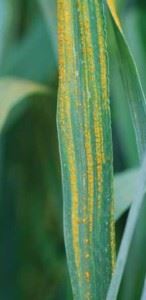
Image 1 - Usual symptoms of stripe rust on wheat
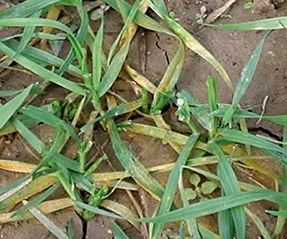
Image 2. Stripe rust symptoms on seedling leaves of wheat (from Compendium of Wheat Diseases and Pests, APS Press)Image 2. Stripe rust symptoms on seedling leaves of wheat.
Photo: Compendium of Wheat Diseases and Pests, APS Press
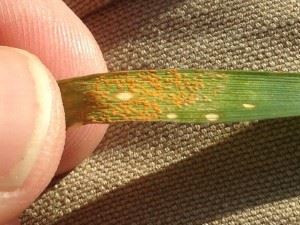
Image 3. Clump of stripe rust on tillering wheat (from Dr. Tom Allen)Image 3. Clump of stripe rust on tillering wheat.
Photo: Dr. Tom Allen
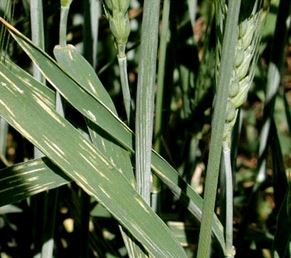
Image 4. Necrotic stripes (dead tissue) with few or no uredinial pustucles on a cultivar with adult plant resistance (from Wheat Diseases and Pests Compendium, APS Press)Image 4. Necrotic stripes (dead tissue) with few or no uredinial pustucles on a cultivar with adult plant resistance.
Photo: Wheat Diseases and Pests Compendium, APS Press
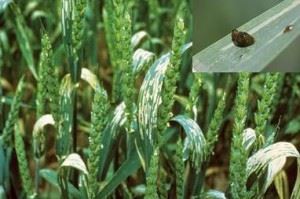
Image 5. Background picture of cereal leaf beetle damage/feeding.
Photo: Compendium of Wheat Disease and Pests, APS Press
Upper right picture is close up of cereal leaf beetle.
Photo: Dr. Scott Stewart